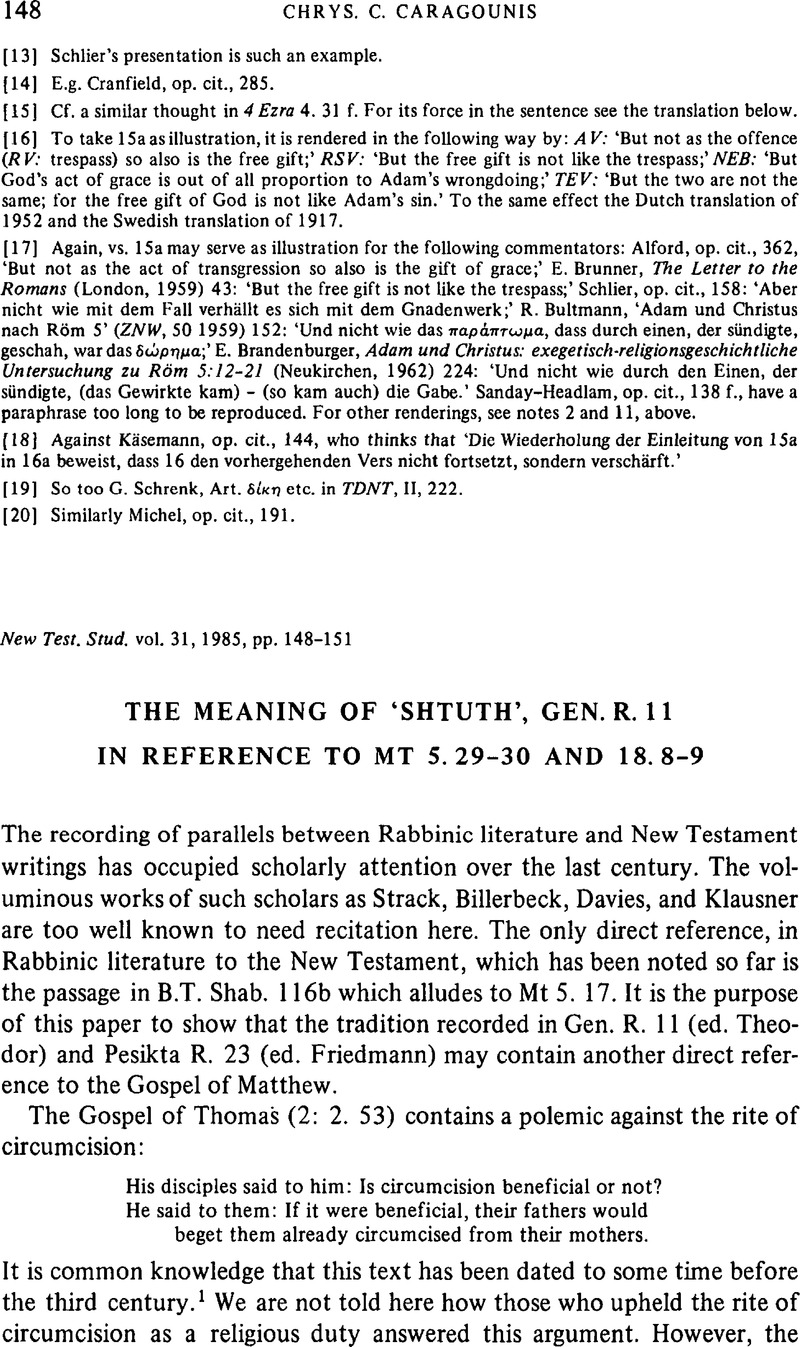Published online by Cambridge University Press: 05 February 2009

[1] For the date of the composition of the Gospel of Thomas see Helmut Koester's introduction to the tract in The Nag Hammadi Library in English (ed. J. Robinson), Leiden 1977. See also de Lange, Nicholas R. M., Origen and the Jews (Cambridge, 1976) 92Google Scholar and 189 n. 14, n. 15. Was it Origen who posed this question of ‘uncircumcised at birth’ (found also in Justin's Dialogue with Trypho ch. 19) to R. Hoshaya?
[2] Gen. R. 11. 7 reads ‘Rabbi Hoshaya’ while Pesikta R. 23 reads ‘Rabbi’ (an appellation of Judah the Prince). Whether we have a corrupt text or two different traditions does not materially alter the date to which the midrash ascribes this exchange of comments. Both Rabbis lived at the end of the second and beginning of the third centuries although Hoshaya was the younger of the two.
[3] E.g. B.T. Shab. 77b, Tosefta Bab. Kam. 4. 4, and Num. R. 18. 7.
[4] Both the Greek and Syriac can be traced to roots in their respective languages which relate to ‘that which causes one to stumble’ and therefore ‘gives offence’. Gen. R. 9. 7 attests Heb. shoteh offensive: na'ar as if from he'ir (an instigator of evil) is rendered by shoteh and parallels shona (perfidious). Cf. Yalon, H., Studies in the Hebrew Language (Jerusalem, 1971) 151.Google Scholar
[5] Lev. R. 3. 4 gives the order: ‘blinded eye, cut-off hand, broken foot’.
[6] That his hair was cut but not his beard also identifies him as a Christian, , cf. Didascalia Apostolorum (ed. Connolly, R. H., Oxford 1929) 10.Google Scholar